At this technological revolution level stands the gummy industry. Advances...
Read MoreSausage Egg and Cheese Biscuit: Tips for the Best Homemade Breakfast Treat



Nothing quite beats starting your day with a warm, golden biscuit layered with salty sausage, a perfect egg, and meltingly good cheese. This timeless breakfast sandwich offers the perfect blend of flavor and texture, making it ideal for hurried mornings, lazy weekends, and everything in between. But why resort to the drive-thru version when you can make this masterpiece yourself at home? This article functions as your ultimate manual for making the best homemade sausage, egg, and cheese biscuit. It is loaded with tips, tricks, and techniques to make this comfort-food classic memorable for you. We will cover everything, from selecting the right ingredients to achieving the perfect biscuit consistency, so you can whip up a breakfast treat worthy of serving in any restaurant. Prepare to win over the most critical eaters while enjoying a home-cooked dish that you can celebrate!
Understanding the Sausage, Egg, and Cheese Biscuit
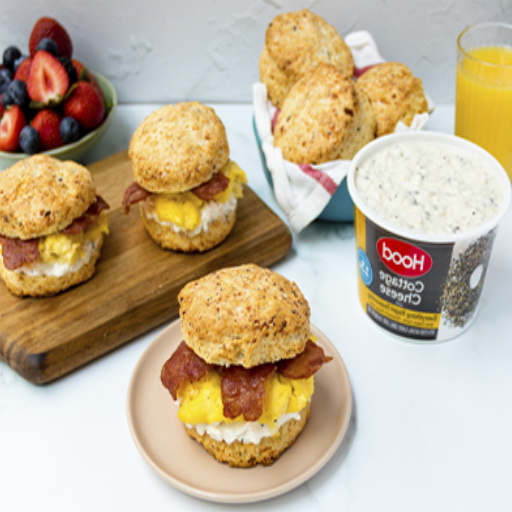
What Makes a Great Breakfast Sandwich?
A terrific day-starter, this breakfast sandwich offers good flavor, texture, and ingredients to make for a lovely morning. Starting with the base, the carbohydrate component must be challenging yet tender; a buttery biscuit, flaky croissant, or toasted English muffin will do nicely. These options provide ample structure and do not clash with the filling. Then there is that savory protein, such as sausage or bacon, with a hint of salt in the background; that’s all it takes for some nice heartiness. And an egg, either scrambled, fried, or poached, will give a luscious richness to the sandwich.
Topping the whole bunch off with some gooey cheese, such as white cheddar, American, or Swiss, can unite all the different relatives. Otherwise, adding fresh ingredients like spinach, tomato, or avocado should give the sandwich an extra punch of freshness and nutrients. Once the flavors combine correctly and come together nicely at every step, each bite will offer a delightful contrast in taste and texture. Balancing the cooking techniques and ingredients is the true art behind transforming a breakfast sandwich into a culinary delight worth remembering.
The Role of Each Ingredient in the Biscuit Breakfast
Each ingredient in the biscuit breakfast contributes to making a balanced and satisfying meal. The biscuit is the foundation that caters to a buttery yet flaky, delicate base, complementing the filling’s vibe and providing comforting warmth to every bite. The eggs, particularly the star, pack protein and offer a complementary, rich, and creamy element that strengthens and balances the texture as well as the overall flavor, contrasting with the biscuit. The cheeses add a savory umami touch, melting perfectly into the rest and adding creaminess.
The types of protein—whether sausage, bacon, or ham—offer intense flavors and a satisfying chewy texture that works well with the flaky biscuit. Proteins are also crucial so that the meal feels heavy enough to be more than just a good taste. Meanwhile, vegetables like spinach and tomatoes add freshness and natural sweetness, boosting nutrition and providing a bold, vivid contrast to the rich ingredients. Optional sauces, such as spicy aioli or an unusual jam, will further complement the ingredients with layers of tangy, sweet, or savory flavors. When combined thoughtfully, these ingredients create an engaging, indulgent yet balanced biscuit breakfast.
Comparing Homemade vs. Store-Bought Options
It depends on several factors, including their preference for homemade options versus store-bought options, freshness, price, and convenience, with nutrition being a secondary consideration. For example, homemade biscuits give you total control over the ingredients, which can be customized to suit your flavor preferences and dietary needs. With fresh ingredients, you can be sure of good quality with minimal preservatives; hence, homemade is a healthier option. They may also come out cheaper by the serving when you scale it up, provided you already have the basic kitchen staples, such as flour and butter.
Store-bought biscuits, by all means, are convenient, and they save you precious time and effort. They are beautiful if you’re on a tight schedule or have a young family that values speed. Several brands are now catering to special diets with organic or gluten-free varieties, although these options often come at a premium price.
Recent trends indicate a shift toward hybrid alternatives, with premade biscuit mixes offering a balance of convenience and customization. On the other hand, some of these brands focus on clean-label products, emphasizing natural ingredients and sustainable practices, which creates a halfway point between homemade quality and store-bought convenience.
Ultimately, it depends on what priorities one puts first in life. Homemade biscuits will have the freshest taste, and you can continuously adapt them to suit your preferences. At the same time, if perfection comes second, store-bought options provide the convenience of consistency. Comparing the two options will highlight how personal needs, such as time availability, dietary goals, and budget, contribute to fueling the best option for each consumer.
Choosing the Best Sausage for Your Biscuit Sandwich

Types of Sausage to Consider
During the creation of a properly made biscuit sandwich, the choice of sausage is what affects taste, texture, and overall satisfaction. Here are some popular options to be considered for sausages:
Breakfast Sausage: With its signature combination of sage, black pepper, and mild spices, breakfast sausage remains a classic choice for biscuits and sandwiches. Its crumble or patty forms pair very well with the buttery and flaky texture of the biscuits, yielding a savory bite that is punctuated with nostalgia.
Pork Sausage: This classic option is rich and full-bodied, typically flavored with garlic, fennel, or paprika. Pork sausage gives a myriad of options, being available in styles such as mild, spicy, or smoked, to accommodate any preference.
Chicken Sausage: This is a leaner meat that is usually seasoned with herbs and spices such as rosemary, thyme, or spinach and feta. This is a good choice for anyone who prefers a lighter protein with bold flavor.
Turkey Sausage: For those who want to opt for a leaner version of pork sausage, turkey sausage retains more flavor while containing less fat. It is often sweetened or smoked, making it a good, healthy alternative to a biscuit sandwich.
Vegan or Plant-Based: Exhibiting a soy, legume, or pea protein base, the vegan sausages offer a green-friendly and healthy alternative for plant-based eaters. These sausages are often designed to be structurally and spice-wise similar to meat, making them a tasty addition to any biscuit.
Chorizo: For a big and spicy punch, chorizo is a fantastic choice! Whether it’s smoked Spanish-style or fresh Mexican-style, its bold and paprika-forward flavors work magic with rich and flaky biscuit chips, adding a downtown attitude to the sandwich.
Italian Sausage: Both sweet and spicy versions of Italian sausage exist. It is seasoned with fennel, anise, and wine for an entirely different experience. It would make the biscuit sandwich a hearty, aromatic treat.
Different dietary needs, spice tolerance, and flavors should always be considered when selecting the type of sausage to include in your biscuit sandwich. Pair the right sausage with biscuits fresh out of the oven, and the meal is elevated a few notches higher, satisfying and memorable at every bite.
How to Cook Sausage Perfectly
The heat, time, and preparation technique should be chosen to ensure that the sausage is tender with plenty of flavor in the final product. First, select the sausage carefully, taking into account your flavor preference and dietary needs: pork, chicken, or plant-based varieties. It should stand at room temperature in the open before cooking, allowing it to cook evenly.
To pan-fry, pour a small amount of oil into the skillet, let the pan warm over medium heat, and then place the sausages in the pan. Cook for 10-12 minutes, turning occasionally, and use a meat thermometer to ensure that the temperature reaches 160°F (71°C) for pork or 165°F (74°C) for poultry sausages. For grilling, the grill needs to be preheated to a medium heat level, and the sausages should be kept turning for uniform browning. Also, check that the temperature reaches the required levels stated above.
If you want healthy sausages, consider baking them. Preheat the oven to 375°F (190°C) and place the sausages on a baking sheet lined with parchment paper. Bake for 20 to 25 minutes. This is beneficial because, while baking, most of the fat melts and drips away, resulting in far less greasy sausages that turn crisp simultaneously.
Whichever method is chosen, overcooking would be risky, as it could lead to the sausage drying out and losing its flavor qualities. Allowing the sausages to rest for a couple of minutes after being taken off the heat helps retain their juices, so even the first bite stays juicy and filled with flavor. Good sausages are the result of perfect cooking, which this simple technique enables the cook to achieve every time.
Popular Brands: The Jimmy Dean Sausage
The Jimmy Dean Sausage has long been a household name, renowned for its distinctive tastes and high-grade ingredients. It was founded in 1969 and gained popularity for advocating breakfast staples that represented convenience and a rich taste. Their product range includes classic pork sausages, turkey sausages as a healthier alternative, and even plant-based sausage patties to accommodate modern dietary preferences.
With their products offered in fresh, frozen, and fully cooked forms, Jimmy Dean has indeed made it easy for a family to put down a hearty breakfast at home. The brand also revolutionized packaging with the introduction of resealable bags for frozen products that maintain freshness and are easy to use. Presently, Jimmy Dean remains the front-runner in the breakfast sausage industry, offering consistent quality that satisfies a wide range of tastes and preferences.
Mastering the Perfect Biscuit

Key Ingredients for Light and Fluffy Biscuits
Everything pertinent to making light and fluffy biscuits includes the ingredient choices and their perfect handling. Flour is at the heart of every biscuit recipe, whether it’s all-purpose flour or self-rising flour, depending on the desired texture. Self-rising flour already contains baking powder and salt, making it suitable for newcomers, which operates well in the biscuit-making process. Whereas, if all-purpose flour is used, keep in mind that the proper amount of leavening must be added, usually baking powder or a combination of baking powder and baking soda, to achieve a nice rise.
Fats must be cold; this is essentially what lends biscuit flakiness. You may choose unsalted butter, shortening, or lard as your primary fat source. Butter is most commonly used for its distinct, flavorful beauty. The crucial point is to keep the fat cold before working it into the dough. This cold fat melting is what generates steam in the oven, separating the layers and yielding tender biscuits. Try cubing or even grating the butter to mix quickly and uniformly.
Buttermilk is also the liquid of choice for the acid reaction with the leaveners that enhance rising, with just a trace of tang to its flavor. You can substitute with milk and vinegar or lemon juice if you’re unable to obtain any. Caution: Don’t overmix! Over-mixing develops the gluten in the flour, which accelerates the formation of a tough biscuit rather than the light one it’s meant to be. Well-balanced and well-handled, these ingredients and techniques yield perfect biscuits that can be baked at home in your kitchen.
Step-by-Step Guide for Making Homemade Biscuits
Preheat Your Oven: Preheat the oven to 425°F (220°C). A properly preheated oven allows the biscuit to rise evenly and the exterior to develop a lovely golden brown.
Prepare Your Ingredients: Gather all the required ingredients: flour, baking powder, salt, butter, and buttermilk or a suitable substitute. Keep the butter cold to maintain the flaky texture, ensuring it does not melt prematurely in the dough. When making a great biscuit, weigh every ingredient for accuracy.
Mix Your Dry Ingredients: Put the all-purpose flour, baking powder, and salt together in a mixing bowl and blend them well. Good mixing is essential for your biscuits to rise properly when baked.
Cut in the Butter: Add cold butter, cut into cubes, to the dry mix. Using a pastry cutter or just your fingertips, cut the butter into the flour until the mixture resembles coarse crumbs. Do not overwork it, as the butter needs to stay cold for a flaky texture.
Add the Buttermilk: Slowly add the buttermilk to the ingredients, combining just enough for the dough to come together. Don’t mix too much or the biscuits will turn out dense. The dough should feel slightly sticky, but it will still be manageable.
Roll and Cut the Dough: Lightly flour the surface, and very gently roll or pat the dough to a thickness of 1/2 inch. Using a biscuit cutter (or any other object with a round edge), cut out the biscuits. Press down straight for the best rise; do not twist the cutter.
Arrange on a Baking Sheet: Place the biscuits on a baking sheet lined with parchment paper, with the edges almost touching. This promotes greater height for the biscuits as they bake. You can also brush the tops with melted butter for added taste and color.
Bake Away: Bake in the oven for about 12-15 minutes, or until the tops are nice and golden brown. Keep a watch on those; no overbaking or drying of the biscuits!
Serve Warm: Allowing them to cool just enough for handling, these biscuits are delicious when served warm alongside butter, jam, honey, or your preferred gravy.
If you follow this recipe to the tiniest detail, you will have delicious, homemade biscuits with a plush interior and a buttery, flaky exterior.
Tips for Storing and Reheating Biscuits
The proper way of storing keeps your biscuits fresh and tasty. Allow the biscuits to cool completely before putting them in an airtight container. It prevents moisture from collecting, which keeps them from becoming soggy. Store at room temperature for two days. Alternatively, you can freeze them for a longer duration. Wrap the biscuits individually with plastic wrap or aluminum foil, then place them into a resealable freezer bag. These frozen biscuits can last for up to three months if stored properly.
While reheating, maintaining its flaky texture is a good tip to remember. Microwave the biscuits for 20-30 seconds on low power, or preheat your oven to 350°F (175°C). Wrap the biscuits in aluminum foil and heat for 10-15 minutes. Brush the tops with melted butter or sprinkle with a few drops of water before reheating to restore some of the moisture. Here is the recipe for warm, tender biscuits that taste freshly baked.
Preparing the Egg and Cheese Layer
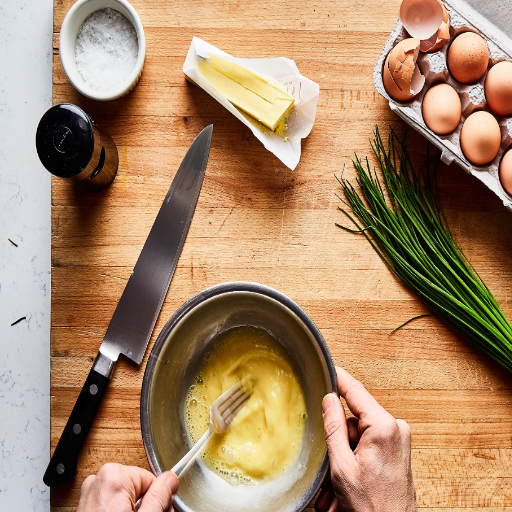
Choosing the Right Eggs for Your Sandwich
Eggs must be fresh to optimize the taste and texture of your sandwich. Fresh eggs have a brighter, more robust yolk, a firmer white, and less undesirable thinning when fried or scrambled. To check freshness, look for an expiration date on the package or inspect the eggs for any cracks or unusual odors. For a richer flavor, consider using pasture-raised or organic eggs, which often have deep yellow yolks, indicating higher nutritional value compared to conventional ones.
Besides freshness, the technique of preparation itself works towards that perfect sandwich experience. Soft-scrambled eggs provide a creamy and fluffy texture that pairs wonderfully with melted cheese and delicate croissants. If you seek some firmness, a sunny-side-up egg or a nicely folded omelet will lend a bit of structure without overwhelming the other fillings. Season with salt and pepper, or add a hint of spice; paprika or chili flakes work beautifully and help bring out the eggs’ flavor, complementing the other ingredients in the sandwich nicely. Therefore, by carefully selecting and preparing your eggs, your sandwich will become a perfectly balanced and satisfying meal.
Egg Preparation Styles: Scrambled Versus Fried
Choosing between scrambled and fried eggs is somewhat more dependent on textural suitability, time, and nutritional issues. Scrambled eggs are soft and creamy, highly adaptable, and great whenever combined with cheese, veggies, or herbs. They are cooked on low to medium heat while being constantly stirred, which forms curds that can be made to taste moister or drier based on personal preference.
Depending on the preparation method, fried eggs can possess a crispy edge with the yolk still runny or entirely set. Popular ways of frying – sunny-side-up, over-easy, or over-hard – offer various levels of yolk consistency; thus, fried eggs cater to almost every taste. Generally, you need a non-stick pan, a little butter, or oil to fry an egg well. Timing is crucial: overcooking can compromise the yolk’s richness, while undercooking leaves it underdone.
Nutritionally, scrambling eggs introduces other ingredients, thereby increasing the calorie count, with milk or butter being the most common additions. Lower-calorie frying methods would use minimal oil. In any case, both preparation styles are excellent sources of protein and essential nutrients to maintain a well-nourished and balanced diet. Scrambled, fried, or anything custom-made with these eggs and a bit of seasoning and pairings can cast a spell on the taste buds.
Choosing the Best Cheese for Your Biscuit Breakfast
Choosing the right cheese for a biscuit breakfast can make a significant difference between a plain meal and a truly sensational one. Several factors come into play when deciding which cheese to select, including flavor profile, texture, and melting characteristics. Cheddar is the most popular cheese, known for its sharp flavor that melts beautifully to form a warm, gooey treat. For a slightly creamy and tangy taste, there’s always Brie, which pairs wonderfully with buttery biscuits. For the bolder palate, it’s time to heat things up with pepper jack, a great marriage of heat and creaminess.
In terms of nutrition, hard cheeses such as Parmesan or aged Gouda offer an intense flavor but contain less moisture, making them suitable for lighter applications. Soft cheeses, such as cream cheese, offer mellower, more balanced flavors-probably the opposite of what you want to spread on biscuits. You can always mix and match cheeses to pair with your biscuit breakfast-bonus points for including eggs, fresh herbs, or even honey for the perfect aroma!
Assembling Your Sausage Egg and Cheese Biscuit
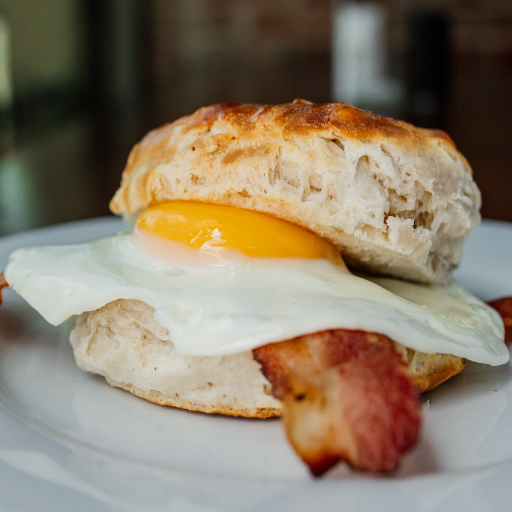
Layering For Flavor and Texture
Creating an ideal sausage, egg, and cheese biscuit is a task that extends far beyond merely combining the ingredients; it is about a delicate balance of different, contrasting flavors and textures that help elevate the dish. Test out toasting your biscuit very lightly, doing very little, so that the biscuit has a slight crunch with a warm base. Follow with some good layering: place in your perfectly cooked sausage patty so that its seasoning enhances the flavors without overpowering other elements. Now, get a nicely fried egg, or scrambled with virtue and all, on top of the sausage; its creamy softness goes hand-in-hand with the biscuit’s slight crunch. Finish with a slice of cheese, ideally melted enough to provide a little binding, adding a touch of richness (Optional Extra toppings).
Some potential toppings that could add another layer of flavor include caramelized onions for sweetness, a handful of fresh arugula for a hint of pepperiness, or a spoonful of spicy aioli for a kick of heat. Textures and flavors should be distributed evenly throughout each bite by designing layers with a purpose. Consider placing saucier elements in the center to avoid sogginess. When layers are well thought out, it becomes a breakfast that dazzles with an irresistible taste and texture contrast.
Creative Additions and Variations
Take your breakfast creations to the next level with unexpected ingredients and combinations that enhance both flavor and presentation. Introduce some far-from-ordinary proteins; smoked salmon or marinated tempeh gives it a nice twist from a nutritional standpoint. For a touch of freshness, add pickled vegetables, such as red onions or radishes, which can also serve as a color contrast. Juxtapose global flavors by incorporating seasonings and spreads like harissa, chimichurri, and tzatziki to create a cultural connection.
For texture, sprinkle some crunch with the help of roasted nuts, seeds, or fried shallots. To maintain balance, consider pairing with creamy counterparts, such as avocado mousse or herbed ricotta, for a smooth finish. Seasonal fruit and microgreens play a decorative role, subtly accentuating the sweetness and earthiness. These inventive changes transform an unappealing breakfast into an epic culinary experience, ensuring the freshness, excitement, and fulfillment of every individual.
Serving Suggestions for Your Breakfast Sandwich
By pairing complementary sides and beverages with the breakfast sandwich, the flavor profile can be elevated. Side dishes may include a vibrant salad composed of seasonal greens tossed in a light vinaigrette, adding a refreshing balance. For a more satisfying side dish, opt for crispy oven-roasted breakfast potatoes seasoned with smoked paprika and herbs. Now, to finish the meal, there’s a fresh fruit medley, slices of juicy oranges, ripe berries, and tangy kiwi to act as nutritional garnishes.
Beverage-based enhancements come from either a fresh brew of aromatic coffee or frothy cappuccino, which brings out the richness of the sandwich. Alternatively, cold-pressed orange juice or nutrient-packed green smoothies may provide a refreshing counterpoint. Besides greatly enhancing the dining experience, these pairings also guarantee the perfect balance for the beginning of the day.
Exploring Casserole Variations of the Classic Biscuit Breakfast
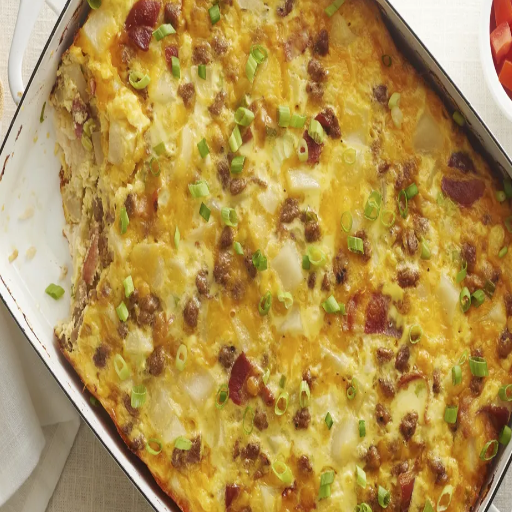
How to Make a Casserole from the Ingredients
I start with the ingredients for transforming the fresh goodies into a casserole: fluffy biscuits, meats such as sausage or bacon, eggs, shredded cheese, and any desired veggies or toppings to fill it out. The next step is to preheat the oven to 375°F (190°C) to ensure everything bakes evenly. I take the biscuit dough and chop it into small chunks, spreading them out in a greased baking dish. This serves as our soft and flaky base, which will soak up all the flavors of the ingredients during baking.
In a skillet, I brown the sausage and bacon until they are crispy, then remove the meat to cool slightly before using. If I’m going to add vegetables, such as diced bell peppers or onions, I add them for a quick sauté in the same skillet to add a hint of extra flavor. In a bowl, I whisk together eggs, milk, and seasonings like salt and pepper, and perhaps some paprika for added color. Over the biscuit chunks, I layer the cooked sausage or bacon, sauteed vegetables, and a generous handful of shredded cheese. Instead of repeating, I simply pour the egg mixture evenly over everything, allowing the liquid to coat all the ingredients.
Once prepped, the casserole bakes for about 30-35 minutes, until the eggs are set and have a beautifully golden top. After taking it out of the oven, it’s allowed to cool a bit before serving. Those few minutes of cooling time let the flavors combine and produce a warm, filling breakfast that combines various taste components into one delightful dish. It’s comfort food at its best for a biscuit breakfast for a huge crowd.
Recipe Ideas for Sausage, Egg, and Cheese Biscuit Casserole
Speaking of recipe ideas for my sausage, egg, and cheese biscuit casserole, I love trying different flavors and add-in combinations to keep things fresh. One simple change is to add fresh vegetables, such as diced bell peppers, onions, or even spinach. These add color as well as nutritional value and a flavor boost. A spicier option would be to add diced jalapeños or red pepper flakes, giving the casserole a nice kick of heat, which is excellent for those who love a bit of spice.
Another way I enjoy mixing things up is by swapping different types of sausage or cheese. Spicy Italian sausage or chorizo will completely change the taste. For cheeses, consider pepper jack, smoked Gouda, or sharp cheddar, which will add another dimension of flavor that pairs well with the dish. Adding some fresh herbs, such as parsley, chives, or thyme, will add a bright note to the flavors.
Sometimes, I tweak the recipe to lighten it up or make it gluten-free, depending on dietary constraints. Gluten-free biscuits in place of regular ones, paired with turkey sausage or plant-based sausage alternatives, are an excellent option for catering to different tastes while maintaining the dish’s authenticity. Those little tweaks keep the casserole flexible and ready for anything: weekday breakfast, weekend brunch with friends.
Benefits of Making a Breakfast Casserole
For me, breakfast casseroles offer a perfect blend of convenience, flavor, and versatility. The most significant benefit is their ease of preparation, especially on busy mornings. I often prepare the casserole the night before and pop it in the oven the next morning. That alone saves me loads of time. The times I need it are when I’m hosting for brunch or have a hectic weekday ahead. Also, breakfast casseroles are complete in themselves, meaning cleanup goes pretty quickly with all my family willing to lend a hand with the dishes or even a big meal.
Another significant advantage is that you can customize it to meet everyone’s needs. I love trying different veggies, cheeses, and meats, so it never gets boring. It is also a great way to use leftovers, so you’re not wasting food but turning it into something extraordinary. I can also modify the recipe according to the person I’m cooking for, if they have specific health needs and prefer gluten-free or plant-based alternatives; this way, everyone has something filling and delicious to eat.
Last but not least, breakfast casseroles are an ideal meal for feeding a crowd. They are pretty filling and nutritious, and can be laid out in slices that are easy to serve. I think they make an excellent meal for occasions because they bring people together at the table without requiring me to spend hours in the kitchen. With all these benefits, a breakfast casserole has now become top on my meal-planning list, and I, therefore, feel prepared to conquer the day after having this comforting meal.
Reference Sources
-
Sausage Egg & Cheese Biscuit Breakfast Sandwiches
A detailed recipe with tips on ingredients and preparation for a perfect breakfast sandwich. -
Ultimate Stuffed Sausage Egg Cheese Biscuits
Offers a creative take on stuffed biscuits with sausage, egg, and cheese. -
Sausage Egg, and Cheese Biscuit Sandwich
Provides a simple and efficient method for making these sandwiches, including biscuit preparation. -
Sausage, Egg, and Cheese Biscuit Casserole Recipe
A family-friendly casserole version of the classic sausage, egg, and cheese biscuit. -
Sausage, Egg, and Cheese Biscuits
Focuses on crafting the perfect biscuit base with high-quality ingredients, such as Irish White Cheddar.
Frequently Asked Questions (FAQs)
What is a sausage, egg, and cheese biscuit made of?
This basic sandwich has a tender biscuit, a hearty sausage, some fluffy eggs, and a soft slice of cheese to complement them. Many prefer pork sausage patties for their added richness to the sandwich. You may use a folded egg or scrambled eggs, depending on your preference. This is somehow scrummy and filling: a worthy breakfast to be had on the run. Consider a quick option, such as a microwave, for convenience.
How do I make a homemade biscuit with sausage, egg, and cheese?
Whatever you want to call it, make or buy some buttermilk biscuits first. Follow the package instructions for cooking or frying a sausage patty to the correct internal temperature. Prepare your eggs by scrambling them or making egg patties. Layer sausage, egg, and cheese between the biscuits to form the sandwich. Another layer of brown gravy or even bacon might add some zing to this hearty sandwich. What a fantastic way to enjoy a very hearty breakfast!
Can I use Jimmy Dean sausage egg for my biscuit sandwich?
Sure! Jimmy Dean sausage egg-type meals are hugely popular for making fast and easy breakfast sandwiches. They come with options like precooked sausage patties or an entire breakfast sandwich, which consists of a biscuit, sausage, and egg. These are great options for a quick morning bite and can be warmed up using a microwave or an air fryer for a crisp finish. Using Jimmy Dean products means making a tasty and filling meal with minimal effort.
What would be the nutrition facts for a sausage, egg, and cheese biscuit?
The nutrition of a sausage, egg, and cheese biscuit largely depends on the ingredients used to prepare it. It usually contains a good amount of protein from the sausage and eggs, as well as calories from the biscuit and cheese. It can also be high in fat if it’s using pork sausage patties. For a healthier switch, go with whole eggs and low-fat cheese. It’s always a good idea to double-check the nutritional information on the box for the most accurate facts if you’re particularly concerned about counting nutrients.
How would I store leftovers of sausage, egg, and cheese biscuit?
Any leftover sausage, egg, and cheese biscuits can be stored in the fridge for up to three days. Reheating options include a microwave for the quickest option, and a skillet for a crisp exterior. To keep it longer, you can also consider freezing. Wrap the sandwiches tightly in plastic wrap and place them in an airtight container. You can heat right from frozen, or thaw overnight in the fridge.
Can I make a vegetarian sausage, egg, and cheese biscuit?
Yes, creating a vegetarian sausage, egg, and cheese biscuit is pretty straightforward. Instead of a pork sausage patty, try one of the many varieties of plant-based sausage currently available. You can add some vegetables, such as spinach or bell peppers, to the egg mixture for added flavor and nutrients. The fluffy egg patty or scrambled eggs with cheese on that biscuit is an amazing, filling breakfast sandwich. These choices can cater to various dietary preferences while hitting all the right taste notes.
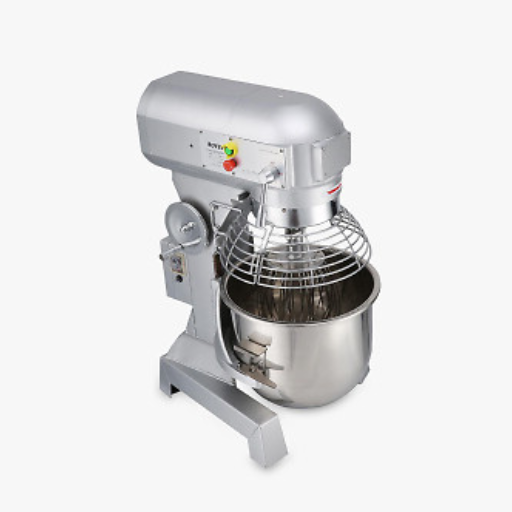
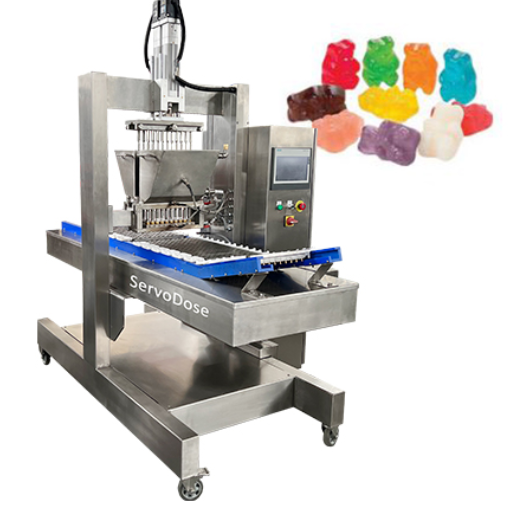
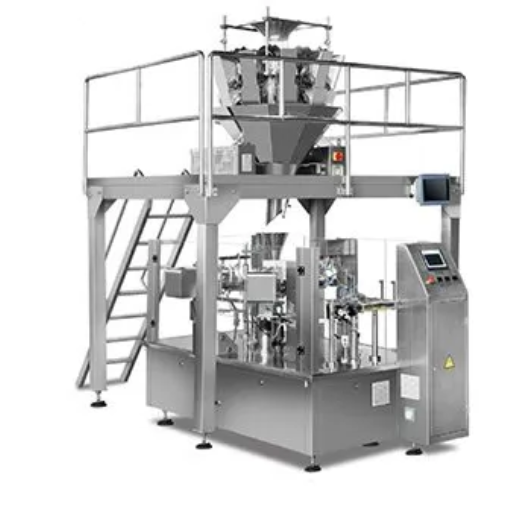
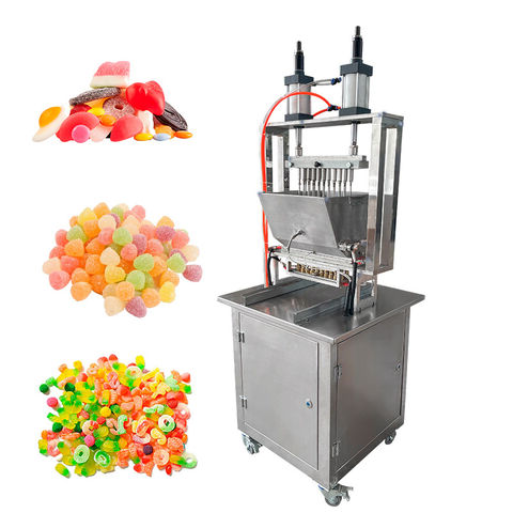

Blog Categories
Popular Blog Tags

Shanghai Fude Machinery Manufacturing Co., Ltd is a leading manufacturer of top-notch gummy and cookie making machines with more than 15 years’ experience in the industry. We provide creative equipment that ensures accuracy and speed while sharing intelligence with food producers. Shanghai Fude remains to be one of the most reliable companies for food machinery because of its dedication to perfection.



